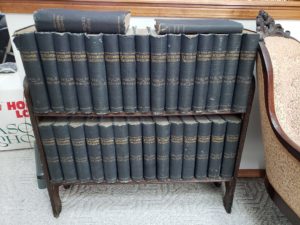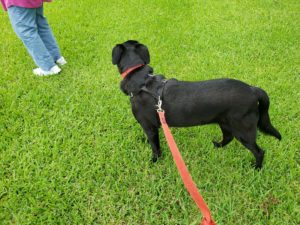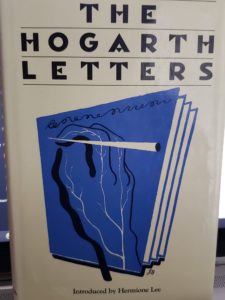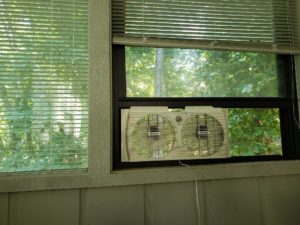
Summer is upon us in northwest Arkansas, both by the calendar and the weather. But our temperatures are hovering just below 90°F, or even in the upper 80s, for the daytime highs. Nightly lows are still in the 60s. That won’t last long. A forecast for next week shows us hitting 100 towards the end of the week.
But, I find it is cool enough to go to the sunroom and read around noon. That won’t last long either. My alternative place to read is a spot on our wood lot just south of the house. The lot is sloping, and finding a level spot to set a chair is a challenge. Last year I tried it but had a bad spot. Sitting wasn’t comfortable.

This year I chose another spot, just off the path to my compost pile. It’s not deep in the woods. In fact, when the sun comes around to due south and then a little to the west of south, the canopy of leaves becomes imperfect and it gets kind of hot. But, before 12:30 PM, when the sun is in the right spot and the shade is full, it’s quite pleasant there, even with the ambient temperature above 90.
The problem is, I find sitting in the woods distracting. I come out through the garage, walk the 40 or 50 feet down the path, put my coffee and book on the log I’m using as a table, set out my chair, and have a seat. I open whatever book I’m reading (currently C.S. Lewis’s Reflections on the Psalms), and read.
Except, I find it impossible to concentrate for long. I’m constantly looking up to see what is in the woods. Or to listen to whatever sound is about. Our street is little traveled and so doesn’t give off much noise. If a strong enough breeze is going, I can hear the trees swaying and rustling through the leaves. I don’t hear many critter sounds. Sometimes a squirrel will be dashing here or there perhaps a hundred feet from me. I will watch it for a while. A bird or two may fly through the woods, but birds I hear more than see.

Anyhow, one day last week, I interrupted my reading to look into the woods. Off to the right and quite a way down the hill, but still on our lot (or just a few feet south of it), was a tree that was newly leaning, closer to horizontal than vertical. I knew this tree. It was one of three trees in the area where I had established a brush pile and a log pile. The trees were dead, but standing. One of these trees, about 6-inch diameter, had come down over the winter. I’ve slowly been cutting it to movable lengths and taking them down to the log pile.
This new one is at least 12-inches diameter. It sits, as I said, a few feet south of our lot line, but is falling in the direction of our lot. I can’t leave it how it is. In North Carolina they called this type of tree a “widow-maker”. So this will be another one I’ll have to clean up.
A 12-inch tree is too big to try to cut without a chainsaw, so maybe I can get a friend to come with his chainsaw and help me out. I want to keep the lot clean for when the grandkids come, so they can play on it without a lot of stuff to trip over. But that will have to wait until after blackberry season, which is now in full swing.
What’s the point of all this? The difficulty of concentrating, which might be a sign of aging? Enjoyable things seen in the woods? The extra work that an extra lot puts on you? I suppose any of those could be a subject to expand.
I was thinking, though, of how using our senses results in expanded observations. When did that tree come down? We had a windstorm, with a little rain, over Saturday-Sunday night. That might have been it. But, it could have come down sometime before that. I’ve been sitting in the woods off and on for about a month, and I don’t remember seeing it before. Had I not seen it, or was it a new casualty of the forces of nature?
I’m not sure how much we use all our senses. Sight. Hearting. Touch. Taste. Smell. Rarely, I think, do I take a moment to observe around us and evaluate the area with all five senses.
I’m trying to do a better job with this. Right now, Friday evening, I’m sitting in the living room. The TV is on in the background, providing sound. It has to compete with ringing in my ears, however. The sight factor is easy, and I won’t describe to you the combination of furniture, clutter, carpet, etc. that I see. No particular smell stands out from whatever the background smell is. I’m sipping cold water, which has a neutral but somewhat enjoyable taste.
As to touch, I’m in the recliner, laptop on my lap. The chair presses in on me, causing some pain in my slowly-recuperating left shoulder. It reminds me that I don’t much like this chair; something about the height of the arms and the way they press in. The “pillow” behind my head also is a bit too big.
Ah, using the senses. Time to get up and find something to exercise more fully my sense of taste. Peanut butter and jelly, perhaps? Or maybe half a grapefruit.













